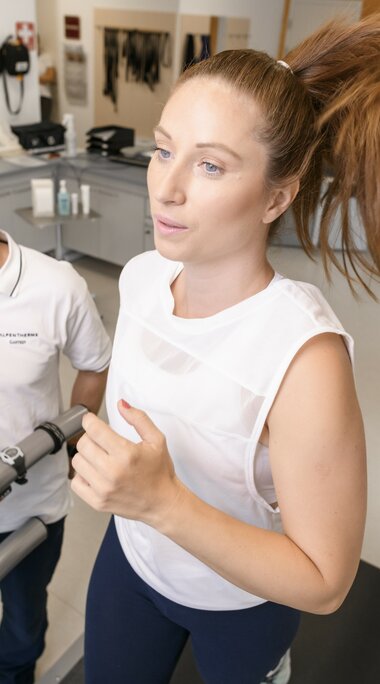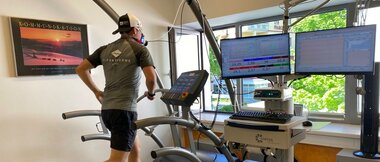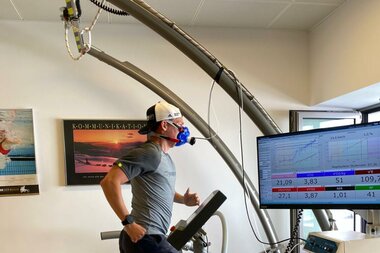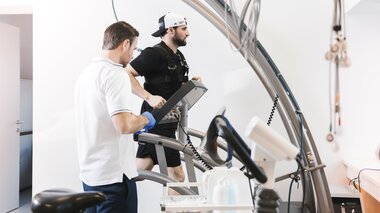Hypoxic training at Alpentherme Gastein is suitable for elite and amateur athletes, though also for patients with cardiovascular disorders. The positive benefits are medically and scientifically proven.
We generally associate hypoxic training with training camps at high altitude for professional sportsmen and -women. However, a more affordable alternative is simulated altitude training, also referred to as "hypoxia".
What happens during simulated altitude training?
With the help of mobile hypoxia generators, here in our Sports Medicine department we create the environment necessary for altitude training through simulated conditions essentially identical with those you encounter at elevations up to around 4500 meters above sea level.
The artificially reduced oxygen level impedes oxygen supply to muscles and lowers oxygen saturation in the blood. The body is forced to pump more blood in order to transport the same amount of oxygen. In turn, this produces training benefits with respect to oxygen absorption, oxygen transportation and oxygen utilization, all of which is encompassed under the umbrella of "hypoxic training".
Improved performance through hypoxic training
For the most effective training possible, we recommend first undergoing a performance diagnostic with spirometry, which will allow you to optimize your training stimuli and hypoxic levels. With the help of performance diagnostics, we measure various factors including respiratory gases, giving us greater insights into your metabolic response during physical exertion. This allows us to identify strengths and weaknesses as well as determine personal training zones and levels of intensity.
Especially in endurance sports, hypoxic training has enormous potential when it comes to mobilizing power reserves and enabling more rapid regeneration. Though also in other types of sport, hypoxic training may be used in various ways to improve endurance as well as physical performance.
Yet another positive effect for top-flight athletes is faster recovery and maintenance of physical condition after injuries affecting the musculoskeletal system. In this way, even though the training intensity may be reduced due to the injury, valuable training can still be done in order to counteract potential loss of form.





